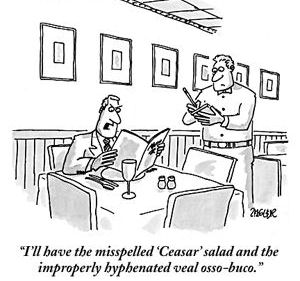
Chapter one of the textbook "Creative Editing for Canadian Journalists" is about the modern role of a copyeditor and the interaction in the news room. The history of journalism is a very logical place to begin a textbook. As important as history is to understanding the why's and how's of copyediting, understanding the contemporary role of a copyeditor is much more useful. The textbook outlines the duties of a Copy editor:
a. editing copy for interest and concision
b. proofreading
c. fact checking
b. judging new value
e. dealing with legal issues in copy
f. protecting the image of the publication
g. writing headlines
h. selecting and editing photos
i. writing captions and cutlines
j. layout
k. exercising news judgment
l. keeping up with the newest technology
Once a person know the why's, how's and what's of being a Copy editor they must next decide if their personality will climatize in the role. Some of the personal attributes are
a. confidence
b. objectivity
c. awareness
d. intelligence
e. curiosity
f. diplomacy
g. eloquence in wiriting
h. sense of humour
There are different techniques for editing different types of documents. Editing for news and editing for a brochure are very different. The newsroom has more of a hierarchical structure within the office starting with the editor-in-chief all the way down to the lowly beat reporters. Although working behind the scenes Copy editors are very important to the news room. "Copy editors are the heart of the media organization, suppling the lifeblood for healthy existance inspiring and serving as gatekeepers of the news for the public". In essence they are one of the most central jobs in the journalism world.
The textbook covers many important points about the role of a Copy editor in the news office; however, we have some suggestions which would have made this chapter easier to read and digest. A bigger focus on the future of copyediting would have been a nice close to the chapter, and different models of hierarchy such as a small paper would have been benifical for those not looking to work in large productions. The chapter could have also included more of a conclusion. Over all the chapter was a good introduciton to Copy editing keeping the language simple and free of jargon.

Greetings good sirs and madams. I have noticed that you pluralized with apostrophes just after your first list. I suggest you correct this next time, or you will be standing tall before the man!
ReplyDeleteOverall we thought that you did a good job of summarizing Chapter 1. HOWEVER, there were a few mediocre spelling mistakes such as "proecting", "introduciton" and "concison". We also found a fused sentence.
ReplyDeleteWe thought you made good use of both lists to display the qualities and responsibilities of copy editing. We agree that this chapter could have used a better conclusion like a summary of the ideas presented.
Copy editing is a very important part of journalism, and its role will continue to change in the coming years.
From the desk of Steven Wagers, Kevin Penny, and Aden Cruz.